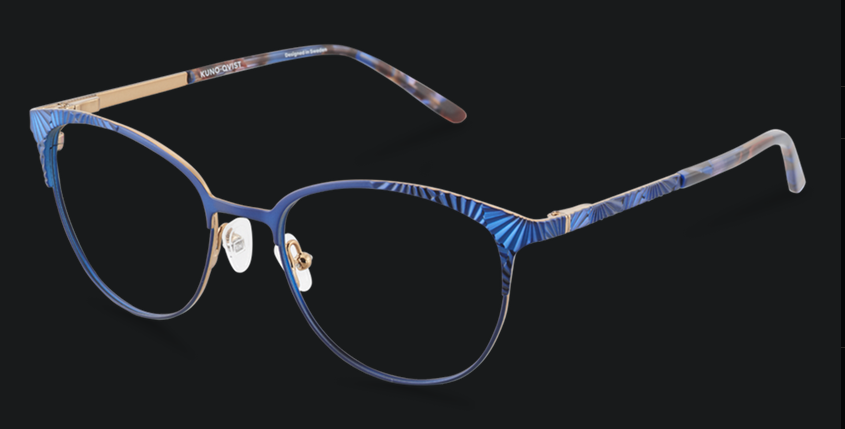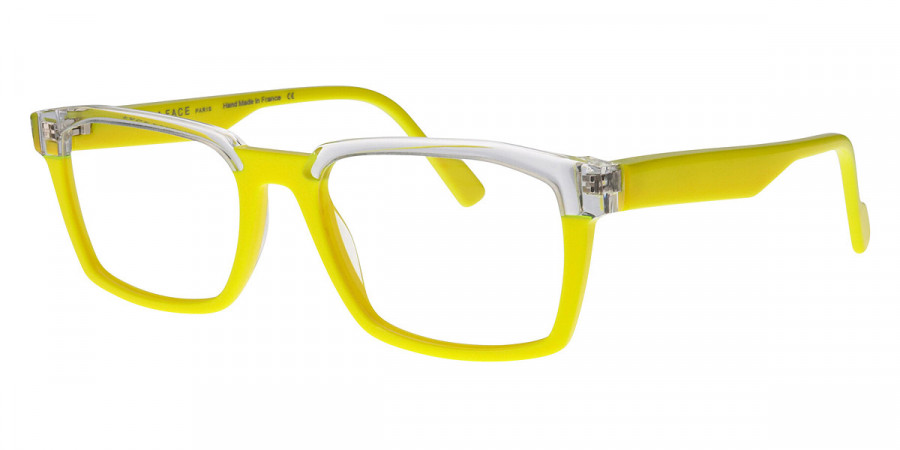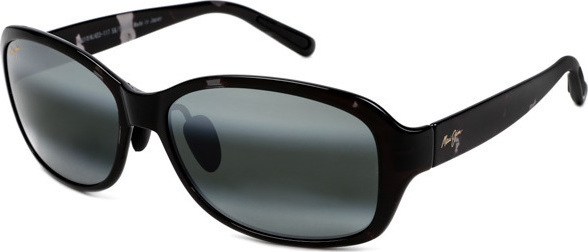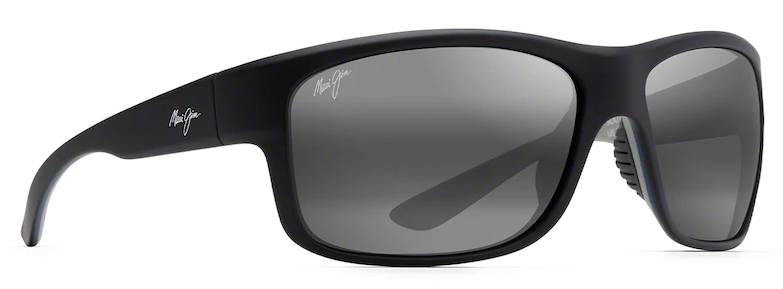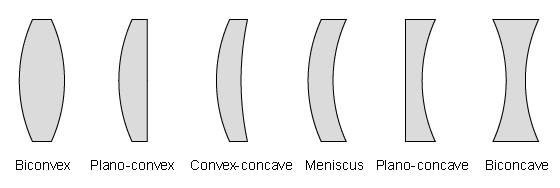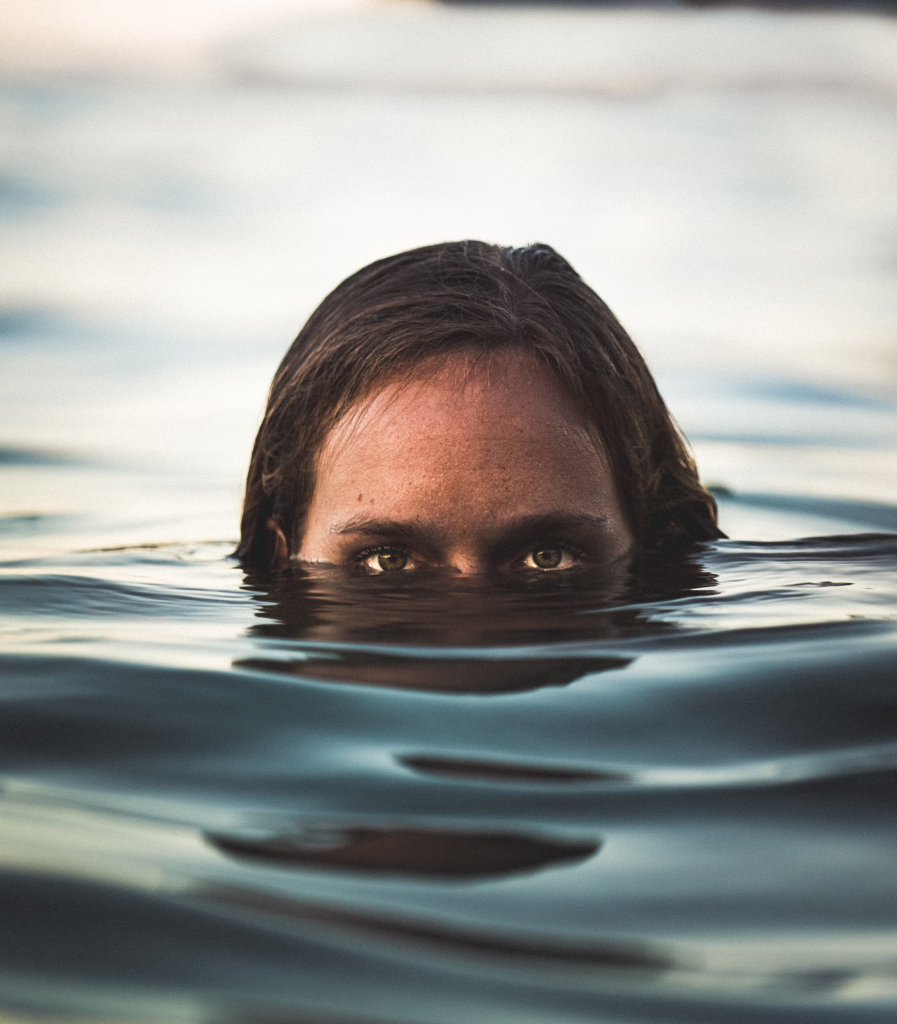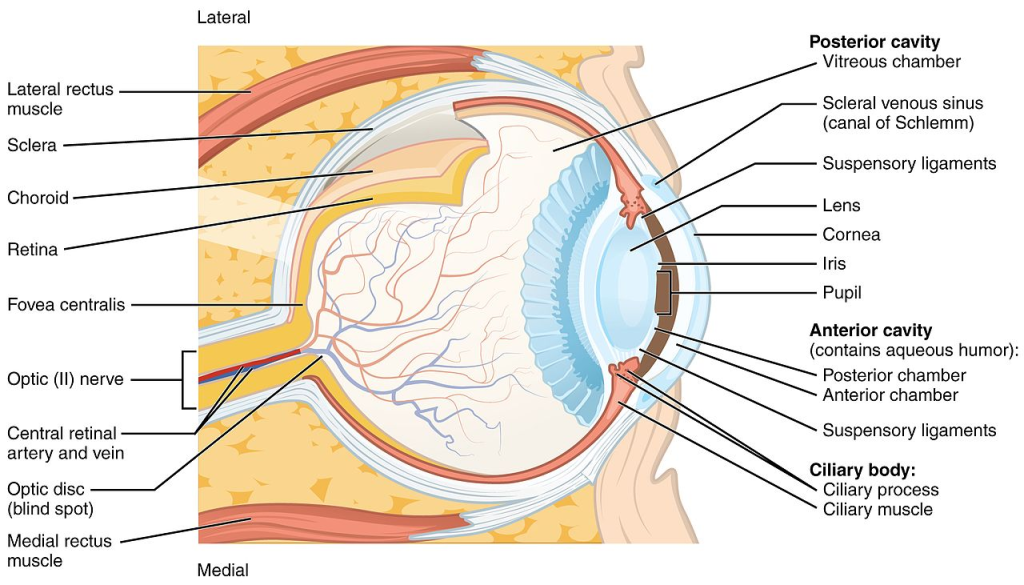This weblog post is the fifth of a series of nine, about optics and optical equipment. This post is about safety glasses/ goggles and other equipment to protect the eyes.
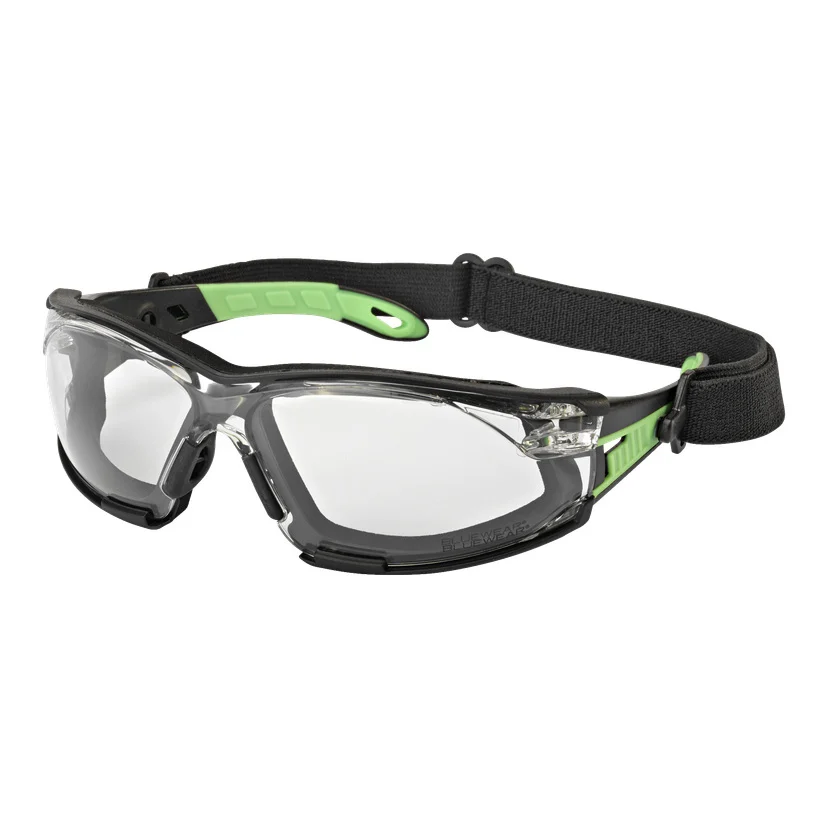
Our household has numerous personal protective equipment (PPE) items available for people to use. Almost all items have been sold as Bluewear, a clothing and accessory brand of Jula, a company that was started at Skara, near Goteborg in south-west Sweden in 1979. Bluewear is a wordplay on the Swedish Blåkläder = blue clothes, a company that was started at Svenljunga, also near Goteborg, in 1959. It has developed a major American presence, today. We often compare safety equipment with the brands offered by Biltema and Clas Ohlsen, as well as Coop. Their house brand products are similar, and typically cost about 50% of the price charged for 3M and Caterpillar equipment. The main criteria for selecting protective equipment are: 1) that it meets appropriate safety standards, and 2) that it is comfortable to wear. The international brands typically emphasize (read: market) a specific specification. Often this is lower than that provided by the house brands.
Protective eyewear (PPEE) conform to EN 166, the European standard. At Cliff Cottage, almost every PPE item is different, because together they constitute a collection. In much the same way that other people may collect stamps, I like to collect PPEs that are diverse and designed to counter a variety of risks. In terms of eyewear these include splatter, impact and light filtration, including UV light. Currently, none are designed to withstand molten metal. In many situations, eyes need protection from foreign objects, such as dust particles, caustic fluids and metal swarf shavings. Eye protection should be worn even if there is no immediate risk.
PPEEs tends to be split into four categories: safety glasses, goggles, visors/face shields and sunglasses. Currently, there is no welding equipment in our workshop, but should this situation change, a fifth category of eyewear would also be needed.
Separate tests are undertaken to ensure suitability against: droplets or splashes of liquids, large dust particles, gases and fine dust particle, short circuit electric arcs, molten metals and hot solids, surface damage by fine particles, fogging, enhanced infrared reflectance, have replacement oculars. Not all products pass all of the tests. Not all products offer the same level of protection, even if they meet the standard, generally.
One also wants protective items to fit and be comfortable. Here, individuals may find one item fits better than another. For me, the house brands are suitable, and I see no need to buy international brands. Confession: I own three pairs of socks labeled with a yellow CAT name. They were bought because they were cheaper than everything else. When I wear them, sometimes people comment. I then feign an appreciation of felines. It is a total misrepresentation. I could never own (or allow myself to be owned by) a cat, because they kill too many birds!
Safety glasses
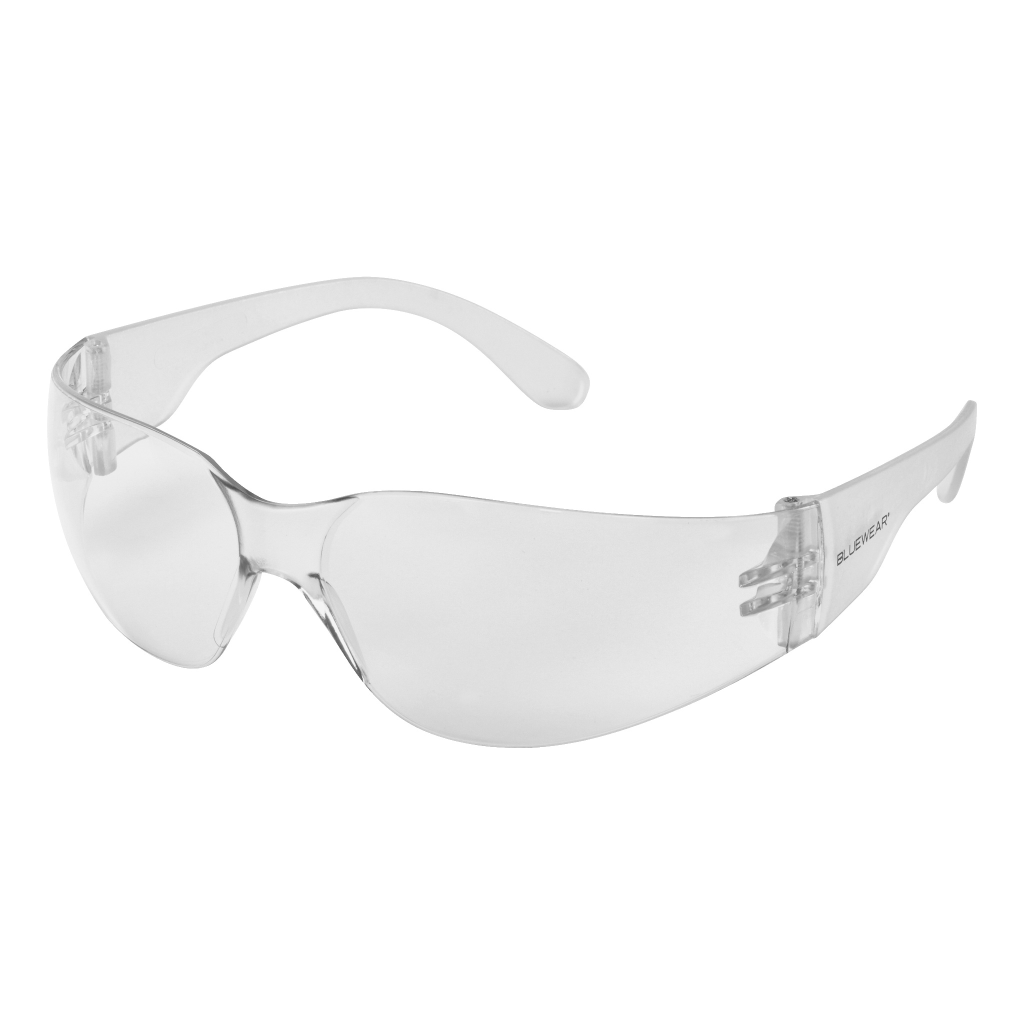
Glasses are the simplest form of eye protection. They come with a rod/ temple on each side that are bent, and end in an ear piece. These are worn over the ear. The main advantage with them is that they are simple and cheap. However, they are not particularly effective in preventing saw dust from reaching eyes. Thus, I seldom use them when working with electric saws.
One can buy 10 Bluewear Cobra safety glasses for the price of a single 3M brand equivalent. We have four, suitable for visitors to the workshop, not undertaking any work. They cannor be adjusted, are more easily scratched, and can fog up. We also have two pairs of slightly better Bluewear Atrax safety glasses, that are less easy to scratch, avoid fogging and are adjustable. They cost about three times more than the Cobra model. These can be used by people working, in the workshop or elsewhere.
Safety goggles
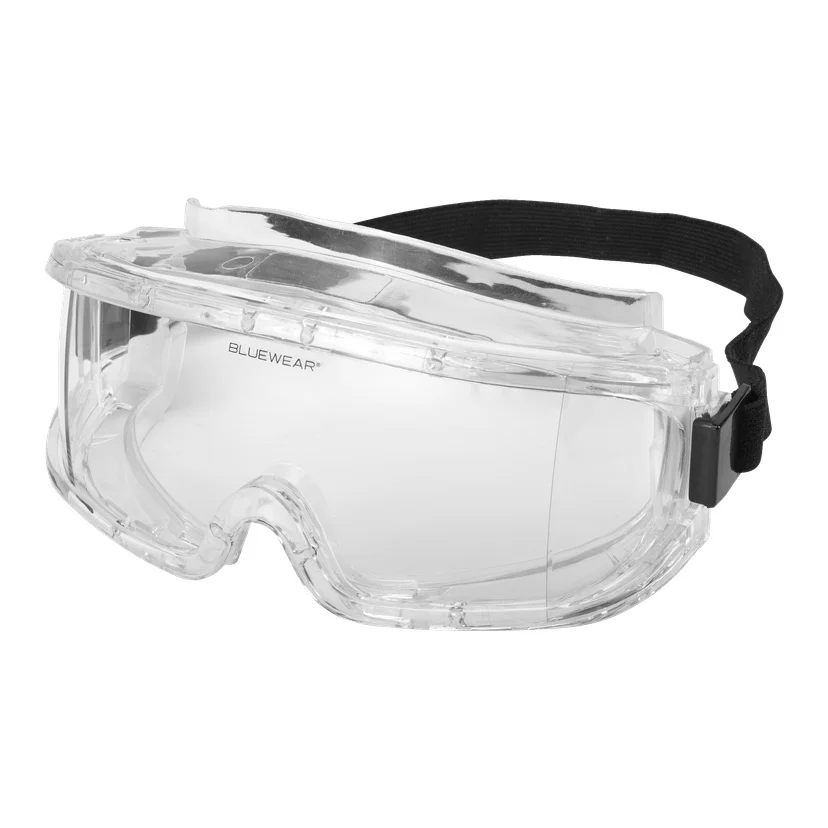
Googles are similar to glasses, but offer increased protection. They are typically fastened with a strap. The main advantage with them is that prescription glasses can be worn inside them. So people with this need should probably use them. However, it should be noted that safety protection equipment worn over glasses may transmit forces through the eye glasses, placing the user at risk! Goggles are effective in preventing saw dust from reaching eyes.
Personally, I use Raptor PPEEs (see photo at top of post) that are somewhere between goggles and glasses, have both temples and straps. These cannot be combined with glasses. These are most often worn when working with electrical tools in a workshop situation, especially with mitre saws and rip saws.
Face shields
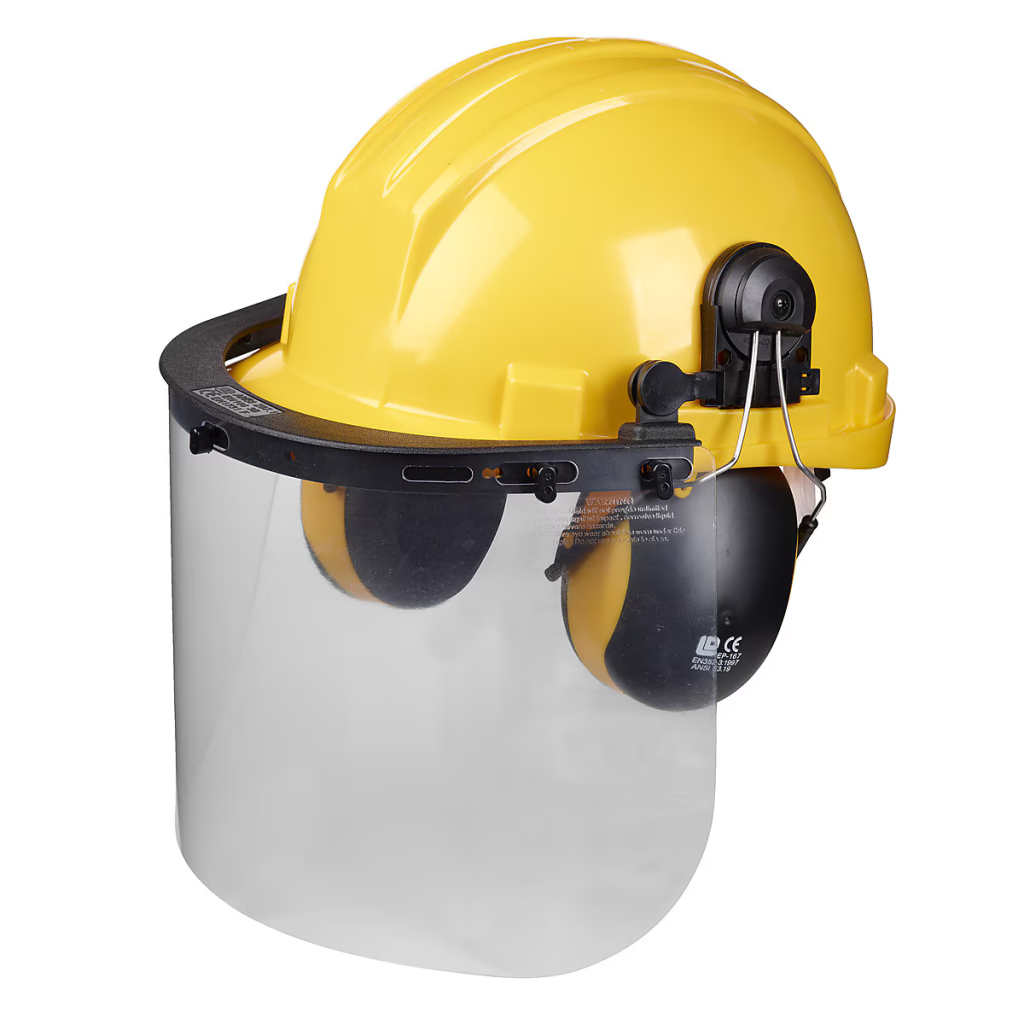
Some face shields are inappropriate despite meeting EN166 standards. They may protect eyes, but they prohibit the wearing of ear protection, often called ear defenders. I refuse to buy/ use these. Instead I have a combined helmet with hearing protection, a poly-carbonate face shield and a mesh = metal netting face shield, only one of these last two can be worn at a time.
In addition to meeting the EN166 standard, these meet the EN 397 (industrial hard hats), EN 1731 (mesh protectors for chain saws), and EN 352-3 (Hearing protectors that are designed to be attached to industrial safety helmets) standards. This equipment is suitable for working outdoors with chainsaws, clearing saws, trimmers but even less dangerous equipment such as lawn mowers. The total price of such equipment is about half that with the three products bought separately.
Sunglasses
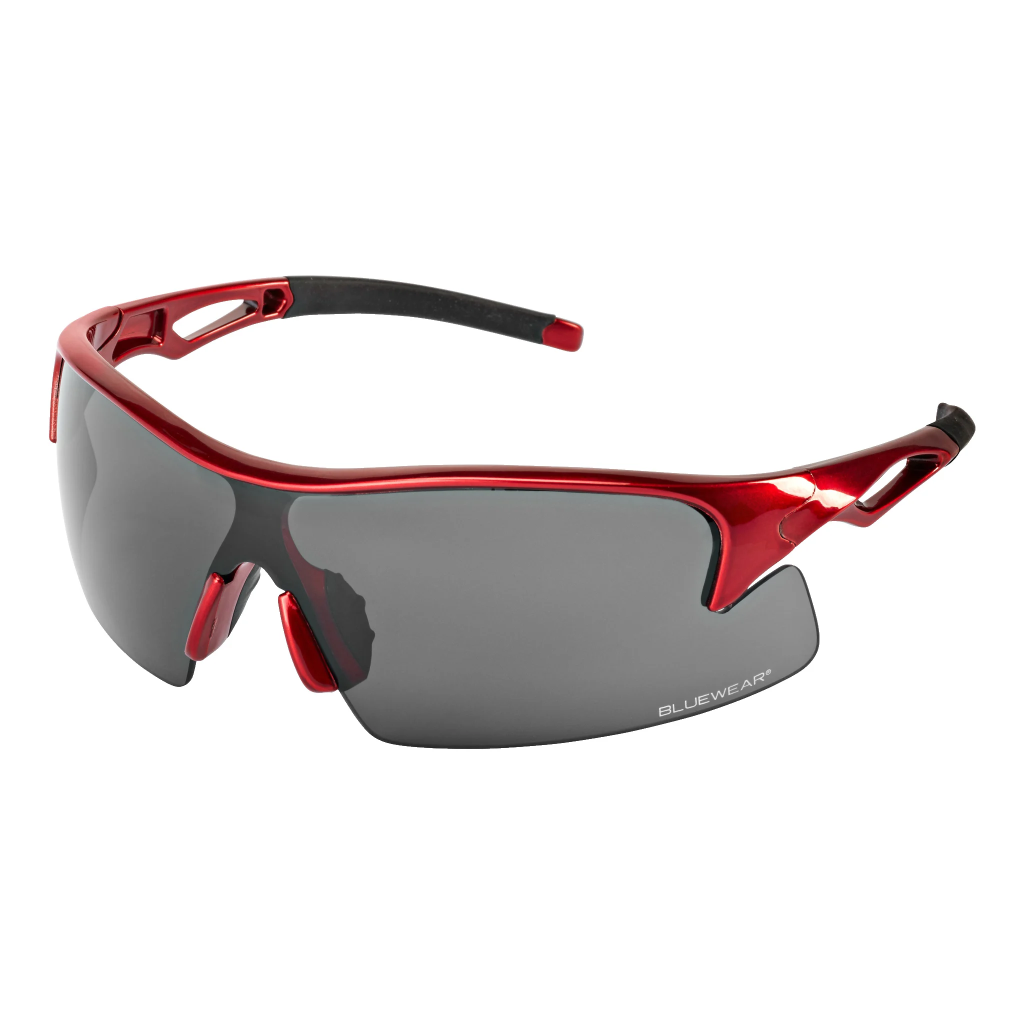
There are two types of safety glasses with dark lenses available at Cliff Cottage. Bluewear Achillo and Bluewear Neptune. Both have partial frames and dark lenses that have been specially treated to give a scratch-free and fog-free surface. Both have rubber-coated rods make the frame comfortable to wear and keep the glasses in place. These can be used when using a lawn mower or garden trimmer. I use a Neptune for outdoor construction work. It fits larger faces. The Achillo fits smaller adult faces; Neptune fits larger faces.
Note: This post was started on 2024-04-27 at 18:00. It was based, in part, on notes taken as an employee at assorted schools. In addition, for five years I commuted with Victor Nilsen (1953 – ), who was chief steward at Romsdal upper secondary school. Our conversations provided me with a lot of anecdotal information about health and safety issues.
Welding helmet
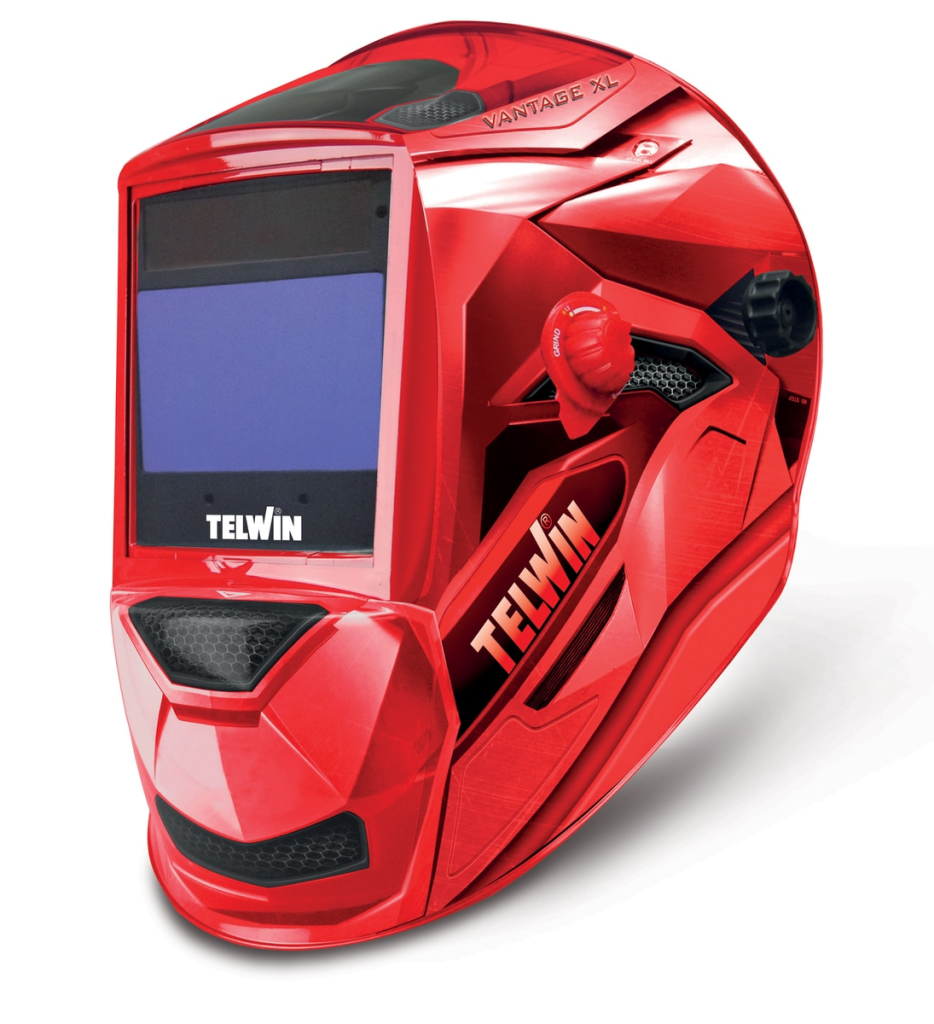
Modern welding helmets are described as automatic. This means that they are fitted with a glass cassette containing liquid crystals typically activated (auto-darken) by an electronic control unit within 100 – 400 µs. The legal limit is 10s which is up to 10 000 times shower, and totally unacceptable in real life. The field of view varies, but many welders find 100 x 67 mm window acceptable, although larger sizes are available, at increased price. The degree of darkness is easily adjustable (5-13 DIN) with 13 being the darkest. There is usually an adjustment knob on the side of the helmet. Some helmets have a lower angle grinder mode with dimming to 4 DIN. Fieldwork and high amperages require helmets with fixed darkening.
Most welding activities undertaken by amateurs can use auto-darkening. Low amperage tungsten inert gas (TIG) welding is a precise and versatile process used to create high-quality welds. It joins metals using a non-consumable tungsten electrode while protecting the welding area from atmospheric contamination with an inert gas such as argon. The shielding gas prevents oxides and nitrides from forming in the weld. Metal inert/ active gas (MIG/MAG) are similar. The most important active gas is CO2. Manual metal arc welding (MMA) uses a flux for shielding. A variety of light sensors can be used to activate darkness.
Welding helmets provide other features. Cheater lenses magnify the view of the work.
Rechargeable batteries can be used to power sensors and liquid crystal cassettes. Some helmets can be plugged in to be recharged or use solar cells. In the future, smart welding helmets will have cameras, and bluetooth connectivity, allowing the welder to communicate through other devices.
Respiratory welding helmets = Powered Air Purifying Respirator (PAPR) masks protect lungs while allowing the welder to breathe normally. They are equipped with external blower units with changeable filters connected by a thick hose for sufficient airflow. Most people prefer an adjustable helmet, with a padded headband.
Welding helmets are often made of ABS plastic. It is cheap, lightweight, sturdy, durable and is a poor thermal conductor. It comes in a matt finish. The alternative is fibreglass. It has high tensile strength, absorbs vibrations and insulates sounds. Given a choice and a large enough budget most welders choose fibreglass!
Favourites
Bluewear Raptor safety glasses pictured at the top are my favourite because they are comfortable, and meet most of my needs. They have soft padding around the eyes and a removable strap. Both are useful to prevent the glasses from moving/ slipping off. The safety glasses are equipped with scratch-resistant and anti-fog-treated clear glass, so that the glasses provide good visibility and have a long lifespan. Unfortunately, because of my light sensitivity, I prefer not to wear these outdoors. Instead, I use Bluewear Nepture dark lens safety glasses.
Welding is not an activity I engage in often, so I do not have a valid opinion about safety equipment.
Note: Originally, this post contained general information about household health and safety stewardship. On 2024-06-21 at 07:30, this content was moved to its own post to be published on 2024-07-27 at 12:00 (Norwegian time).


